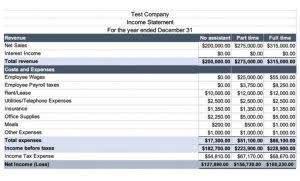Content

To overcome this, the financial world has adopted the mark to market methodology. The following guide focuses on how marking to market benefits retail and institutional derivatives traders. We’ll examine how it works and how it affects the value of assets. Traders who focus on futures and future options should be aware of the 1256 tax treatment in mark-to-market accounting. Namely, the Section 1256 contract is an investment defined by the Internal Revenue Code as a regulated futures contract, foreign currency contract, non-equity option, dealer, dealer securities futures contract, or equity option. These contracts must be marked to market if kept until the end of the tax year. They are treated as if they were sold for a price that aligns with the fair market value.

It can lead to a troubling situation during times of uncertainty which can cause the value to assets to move dramatically. In fields of future trading, it minimizes the administrative overhead of the exchange.
Stocks 📈
It is a very effective methodology to estimate the real value of assets thought it has both pros and cons to it. It is a forward-looking approach and thus is preferred widely by investors especially in the field of futures trading. It not only helps investors to estimate how much money they have lost or gained during a day but also prevents investors from counterparty risk. The mark to market in derivatives is useful for futures contracts.
The most realistic way to value assets is by valuing them at the last price at which they traded. But, there are several disadvantages, and the process can have implications for the entire financial system. When lenders make a loan of this size, they need to ensure that the value of the collateral is maintained. They do this by marking the value of the collateral to market each day.
Which Assets Can and Can’t Be Marked to Market? 🗃
The monetary amount of loss realized from selling shares that cannot be counted as a loss due to the IRS’ wash sale rule. When you exchange funds, you are selling shares of a fund you own and using the proceeds to buy shares in another fund in the same fund family. Your company allows you to make cash payment for the estimated tax withholding obligation on eligible grants.
- If your account is not restricted and does not have an outstanding day trade minimum equity call, your account balances will reflect your Day Trade Buying Power rather than the Day Trade Minimum Equity Call.
- This entity creates the accounting and reporting guidelines for businesses and nonprofits in the US.
- Neither our writers nor our editors receive direct compensation of any kind to publish information on tokenist.com.
- For an asset that is actively traded, like a government bond, the market price is the best estimation of the asset’s true economic value.
- The epitome of a wrongful application of mark to market accounting principles, for example, was the biggest scandal in corporate history – the fall of Enron.
- Traders can choose to use the mark-to-market rules, investors can’t.
Commercial Paper, Treasury notes, and other money market instruments are included in it. Suppose on a particular trading day, the value of the security rises. mark to market accounting In that case, the trader taking a long position will collect the money equal to the security’s change in value from the trader holding the short position .
Mark to Market
That allows business leaders to make decisions on whether to increase or decrease each investment or pay to transfer some risk to other parties. The sale, gift, or exchange of shares acquired through exercise of a qualified stock option prior to the end of the disqualifying disposition period may cause you to cease to qualify for favorable tax treatment of your grant. Consult your grant agreement and your tax advisor for the rules applicable to your grant. A day trade call occurs when your account exceeds its day trading buying power. When this occurs, you must generally deposit funds to settle the call within five business days. However, Fidelity reserves the right to meet margin calls at any time prior to the stated due date. Assume you are a futures trader and you are making your first deposit with your preferred exchange.
- This link only displays if you have a NetBenefits account in your portfolio.
- Most of the alternative methods of valuing an asset are subjective and prone to bias.
- Marge has decided to take some college business courses to help her with a new business venture.
- In futures trading, it plays a vital role because it helps to determine whether an investor has made money or lost money in the trade.
- After the first day, your mark to market profit or loss is calculated by multiplying the daily change in price by the multiplier.
- For example, an individual with a stock portfolio worth $10 million does not actually have $10 million in cash under their name.
Depth of Book allows market participants to assess the liquidity of a given security. Depth of Book also enables customers to see beyond the best bid or offer price which may be of a limited quantity. In these scenarios, this greater visibility into the full market is useful for customers who wish to purchase larger quantities of a given security. A DeMinimis rollover occurs when an employee with a defined benefit or defined contribution plan account with a balance between $1,000 and $5,000 is terminated by an employer. To prevent immediate taxation, the balance is automatically rolled over to a rollover IRA account, which allows the employee to retain the balance in a tax-deferred account.
Marking to Market vs Historical Cost
Average Daily Trading Volume means the average trading volume of the Company’s Common Stock in the ten Trading Days immediately preceding the respective Put Date. Goodwill is an intangible asset recorded when one company acquires another. It concerns brand reputation, intellectual property, and customer loyalty. Full BioPatrice Williams is a writer and the author ofLooking Fly on a Dime. Her writing has appeared in Travel+Leisure, USA Today, and Fodor’s, among others. Patrice has shared her expertise on-air with segments on the Today Show, WEtv, and The Nate Berkus Show, and she was the Savvy Shopper reporter for WPIX in New York City.
- Mark-to-market accounting is not as static or predictable as historical cost accounting based on original value and asset depreciation.
- Commercial Paper, Treasury notes, and other money market instruments are included in it.
- In general, mark-to-market accounting runs the risk of being inaccurate.
- Instruments like stocks and bonds can be marked to market, while real estate and art needs to be valued by an independent third party.
This method in corporate accounting recognizes the gains and losses in the year they occur by adjusting pension plans with fair value. It reflects pension plans’ current returns in assets, changes in discount rates on liabilities, and other gains or losses instead of moving the revenues and expenses from one period to another, as in the smoothing approach. In trading, we use it to better reflect the current market value of a security, account, or portfolio instead of its book value.

